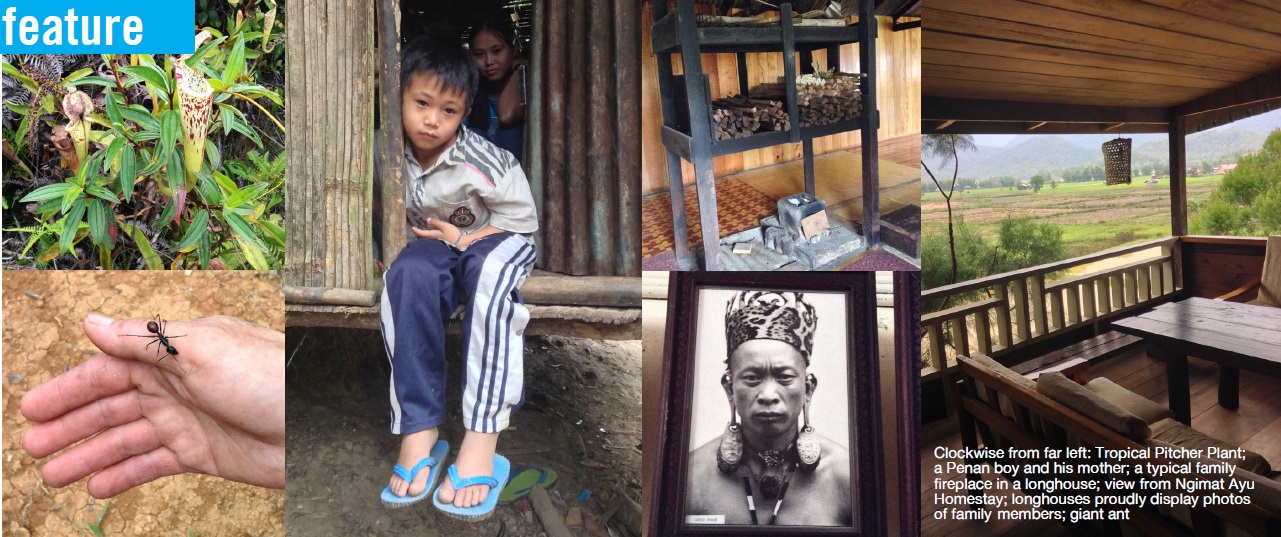A getaway for those whose minds are weary (but their bodies are not).

Last October, I, along with a handful of international media, boarded the Twin Otter turboprop plane from Miri airport for a 50-minute ride to the rural village of Bario, located in the northeast of Sarawak, Malaysia’s largest state. Known as the gateway of the Kelabit Highlands, a series of mountain valleys lying slightly over 1,000m above sea level, Bario is often described as Sarawak’s Shangri-La.
We flew over an endless expanse of green—vast plantations, hills and mountains, jungle treetops looking like broccoli sprouts—with winding Baram River, Sarawak’s second longest river, snaking over the land. The small plane’s roaring motor, so loud that one could only communicate using hand signals, was a stark contrast to the serene land that surrounded us after we had disembarked.
One will first notice the fresh quality of the cool, mountain air that one can’t help but take deep breaths, as if making up for the deprivation of living in the city. After gathering our luggage (weight limit of 10kg per person), we were greeted by our host who gave us a brief background on his home.
The Kelabit tribe population number less than two thousand. Traditionally rice and sheep farmers, hunters, and fishermen, some serve as guides or homestay hosts for the local eco-tourism industry. Our host, Scott Ngimat, brought us to his family home, the Ngimat Ayu homestay, which is named after his deceased father, a respected chieftain. The wooden house had simple but comfortable amenities, with five bedrooms, common toilets and baths, a dining room/kitchen, and a verandah. Contact through Trip Advisor, or Scott at tel (+6013) 840-6187
First on the agenda was lunch. A typical meal consists of a variety of vegetable and meat dishes. There were several dishes made with wild deer (fried, curried, and cooked with soy sauce), river fish, vegetables such as yam, string beans, chayote, and bottle gourd, and of course, the famous Bario rice. Dessert was freshly picked, sweet pineapple.
We then took a walk to Asal Longhouse, Bario’s oldest longhouse. Traditionally, several generations of each family live together under one roof in a sprawling wooden longhouse, subdivided into separate living quarters for each family and a common area, used for social gatherings such as weddings and family meetings. There are 21 families that have rooms in Asal Longhouse, starting with the elderman’s at the center, his siblings’ to his left and right, and their extended families. The Kelabit community are known for being educated and intelligent, and members who’ve held high positions in the government are a source of pride.
One of the activities in the Kelabit Highlands is trekking from longhouse to longhouse through dense rainforest and across rice paddies. A trek can last from a few hours to a few days in duration, and vary from a gentle stroll to a tough jungle hike. (Tip: For hikes that go deep into the jungle, guides are often recommended). During one of our treks we came across a Penan settlement, a small, nomadic tribe who often live in the heart of the forest.
The next day, we met our guide Rian John, a local, certified nature guide, along the Bario logging road and we entered the forest for a trek to a natural salt spring. The Sarawak Highland spring salt produced here is known for having high mineral content. Along the way, we passed a Kelabit megalith, one of more than 300 cultural sites. Batu Narit in Pa’ Umor is a large rock in the middle of a field with a carving of a human figure with arms stretching outwards—how it got there is explained through the tale of Upai Semaring, a legendary warrior who left carvings and marks on several rocks in different areas.
On our last night in Bario we had a traditional dinner at the Ulung Palang Longhouse. Once the bowls of local asparagus with dried fish, river fern, chives, tapioca leaf, sambal, chicken steamed in ginger leaves, and porridge with dried mustard were empty, the night turned celebratory. Women and men in colorful, traditional attire rich in beadwork danced to sape music, made using a wood instrument. Everyone—friends and family—had to dance their graceful yet energetic movements. The elders showed their individual dancing styles while the sape player, the last in the family who knows how to play, endlessly strummed out tunes. It was late by the time we got back to our homestay, but the night hadn’t ended for us, as our group settled into more stories and laughter, with the sound of crickets, cicadas, and frogs for company.
Written by Maris Mortel-Hiruntrakul as it appeared in Manila Bulletin's Style Weekend Nov 2014